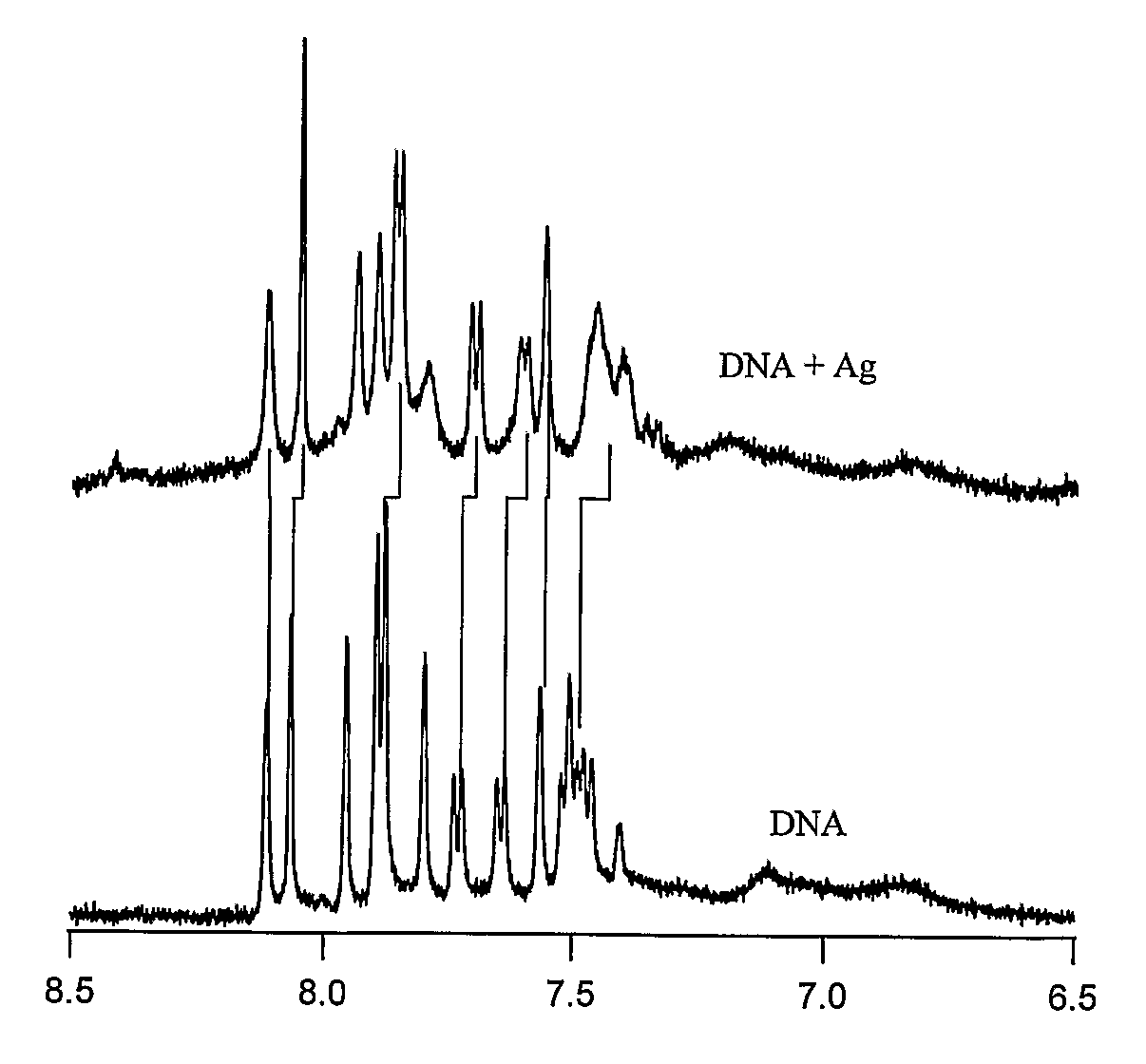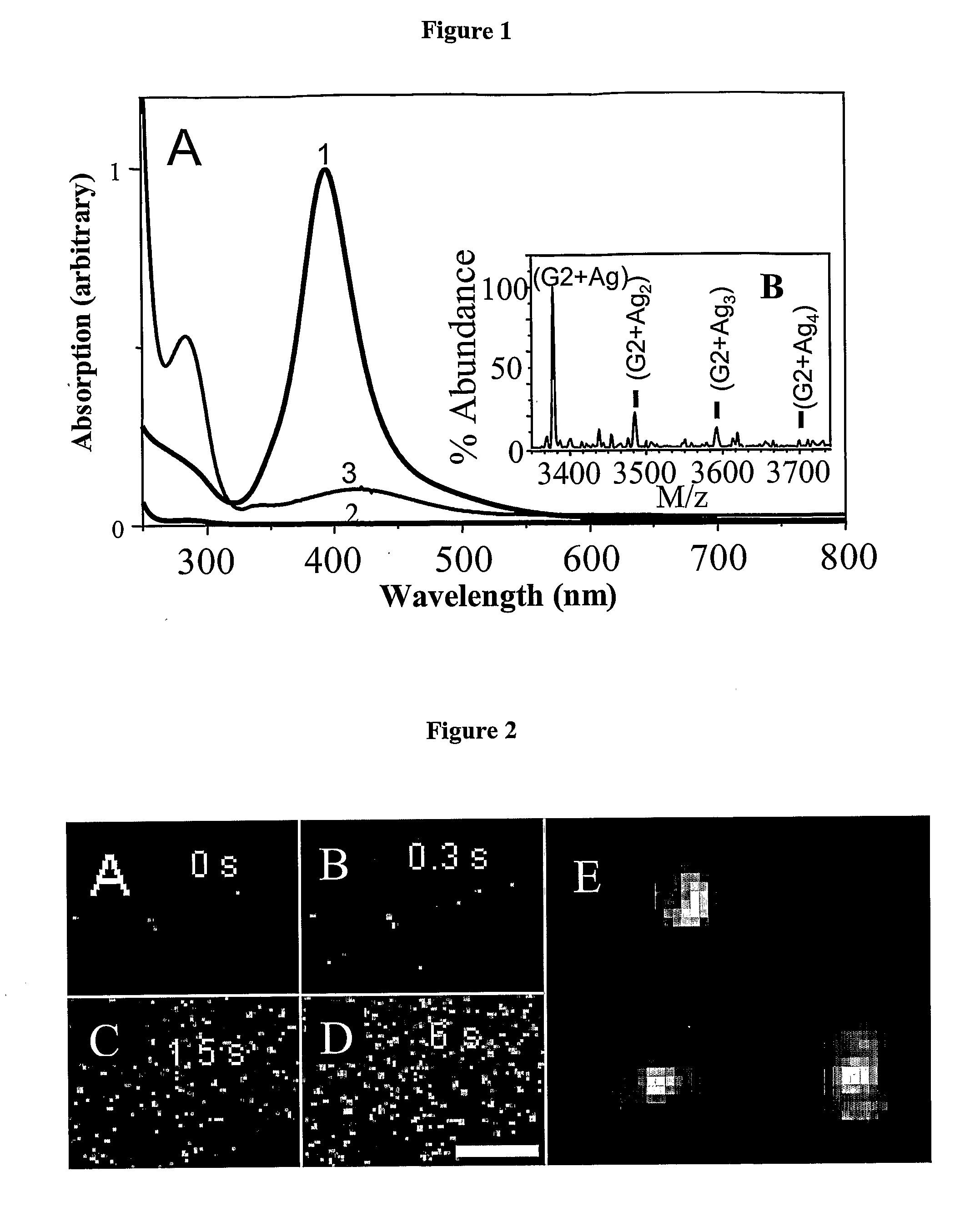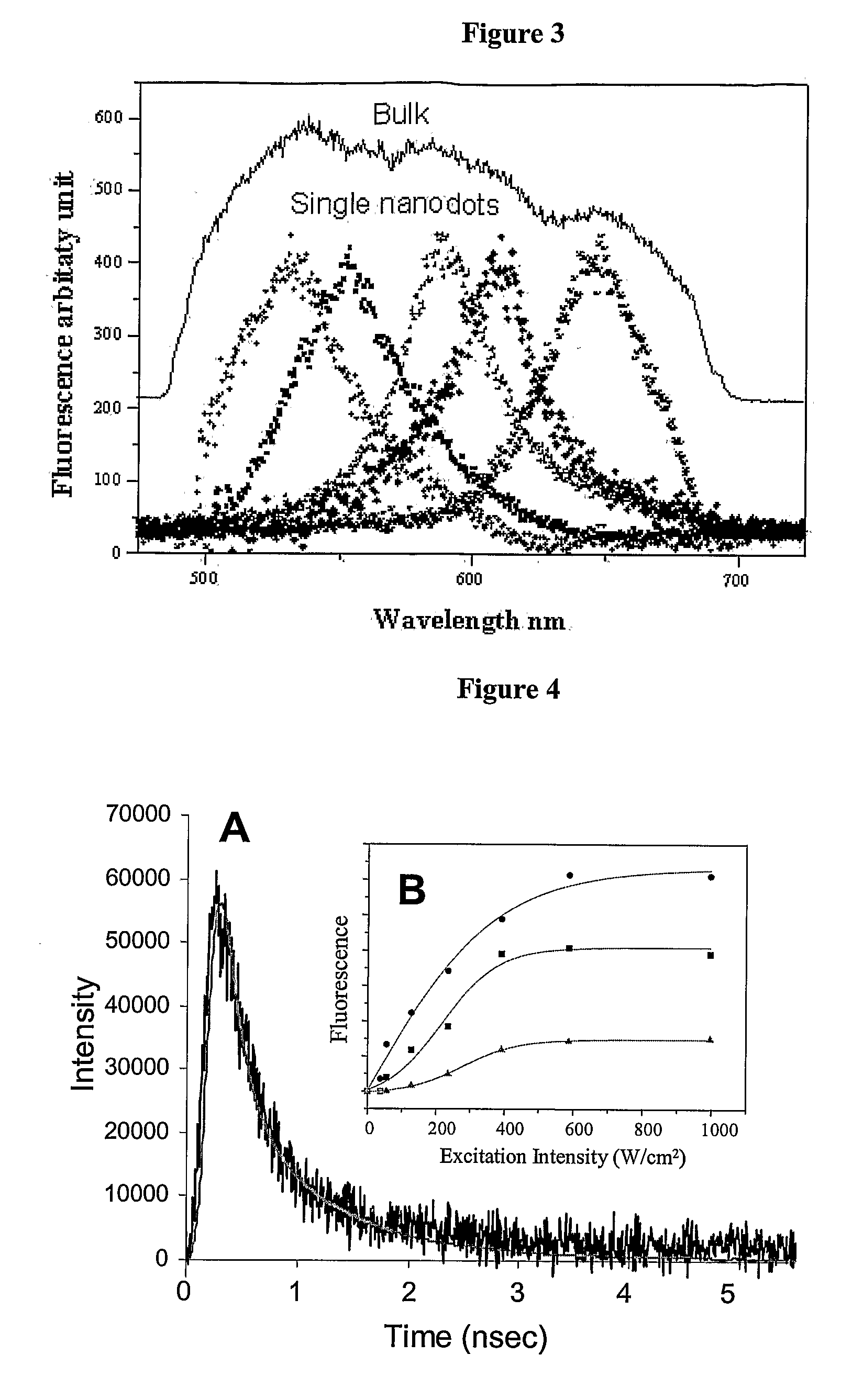Raman-Enhancing, and Non-Linear Optically Active Nano-Sized Optical Labels and Uses Thereof
a technology of optical labels and nano-sized molecules, applied in the field of fluorescence, nonlinear optically active and/or single molecule raman active labels, can solve the problems of photobleaching (loss of signal), the extreme limit of single molecule fluorescence microscopy studies, and the extreme limit of weak signals that must be observed on essentially zero background
- Summary
- Abstract
- Description
- Claims
- Application Information
AI Technical Summary
Benefits of technology
Problems solved by technology
Method used
Image
Examples
example 1
Generation of Dendrite-Encapsulated Silver Nanoclusters
Methods
[0129]PAMAM is known to sequester metal ions from solution (Crooks et al., Accounts Chem. Res. 2001, 34:181; Ottaviani et al., Macromolecules 2002, 35:5105; Zheng et al., J. Phys. Chem. B 2002, 106:1252; Varnavski et al., J. Chem. Phys. 2001, 114:1962). PAMAM G4-OH and G2-OH dendrimers (4th and 2nd-generation OH-terminated poly(amidoamine), respectively, Aldrich) were therefore utilized to concentrate, stabilize, and solubilize Ag nanoclusters in both aerated and deaerated aqueous solutions. By dissolving 0.5 μmol G4-OH and 1.5 μmol AgNO3 into 1 ml distilled water (18 MΩ) and adjusting the solution to neutrality with 160 μmol acetic acid, silver ions readily interact with the dendrimer. Usually used to create small nanoparticles (>3 nm diameter), literature preparations generally add small amounts of reducing agents such as NaBH4 (Crooks et al., Accounts Chem. Res. 2001, 34:181; Ottaviani et al., Macromolecules 2002, 35:5...
example 2
Characterization of Individual Ag Nanodots
[0135]A range of PAMAM dendrimer generations (G0-OH through G4-OH with diameters (MW) ranging from 1.5 nm (517 g / mol) to 4.5 nm (14,215 g / mol) were used to yield highly fluorescent Agn nanodots. Very bright fluorescence was observed over a pH range of 8.0 to 3.0. These different generations of PAMAM allowed a measure of control over nanocluster distributions: nanodots created with smaller dendrimer generations exhibited different emission spectra than nanodots created with higher dendrimer generations. Not only was nanodot emission extremely stable in spectrum and intensity, but they also exhibited highly polarized emission with very clear and stable dipole emission patterns (FIG. 2E). The observation of emission patterns allowed the employment of the three-dimensional orientational methods developed to follow orientational dynamics either in solution or of immobilized features, as described in Bartko, & Dickson, J. Phys. Chem. B 1999, 103:3...
example 3
Generation of Dendrite-Encapsulated Gold Nanoclusters
[0139]Previous studies have yielded fluorescent, surface passivated gold nanoclusters ranging in size from 28 atoms to smaller particles (−3 to 10−4 quantum yields and polydisperse nanoparticle size distributions have precluded them from being good fluorophores (Link et al., J. Phys. Chem. B 2002, 106:3410-3415; Huang & Murray, J. Phys. Chem. B 2001, 105:12498-12502). The present invention discloses water-soluble, monodisperse, blue-emitting Au8 nanodots that when encapsulated in and stabilized by biocompatible PAMAM dendrimers (Tomalia, Sci. Am. 1995, 272:62-66), exhibited a fluorescence quantum yield of 41±5%, a more than 100-fold improvement over other reported gold nanoclusters (Link et al., J. Phys. Chem. B 2002, 106:3410-3415; Huang & Murray, J. Phys. Chem. B 2001, 105:12498-12502). Larger Aun nanodots have also been produced with strong luminescence throughout the visible region (Zheng, et al., Phys. Rev. Lett 2004, 93: No....
PUM
| Property | Measurement | Unit |
|---|---|---|
| Temperature | aaaaa | aaaaa |
| Temperature | aaaaa | aaaaa |
| Temperature | aaaaa | aaaaa |
Abstract
Description
Claims
Application Information
 Login to View More
Login to View More - R&D
- Intellectual Property
- Life Sciences
- Materials
- Tech Scout
- Unparalleled Data Quality
- Higher Quality Content
- 60% Fewer Hallucinations
Browse by: Latest US Patents, China's latest patents, Technical Efficacy Thesaurus, Application Domain, Technology Topic, Popular Technical Reports.
© 2025 PatSnap. All rights reserved.Legal|Privacy policy|Modern Slavery Act Transparency Statement|Sitemap|About US| Contact US: help@patsnap.com



